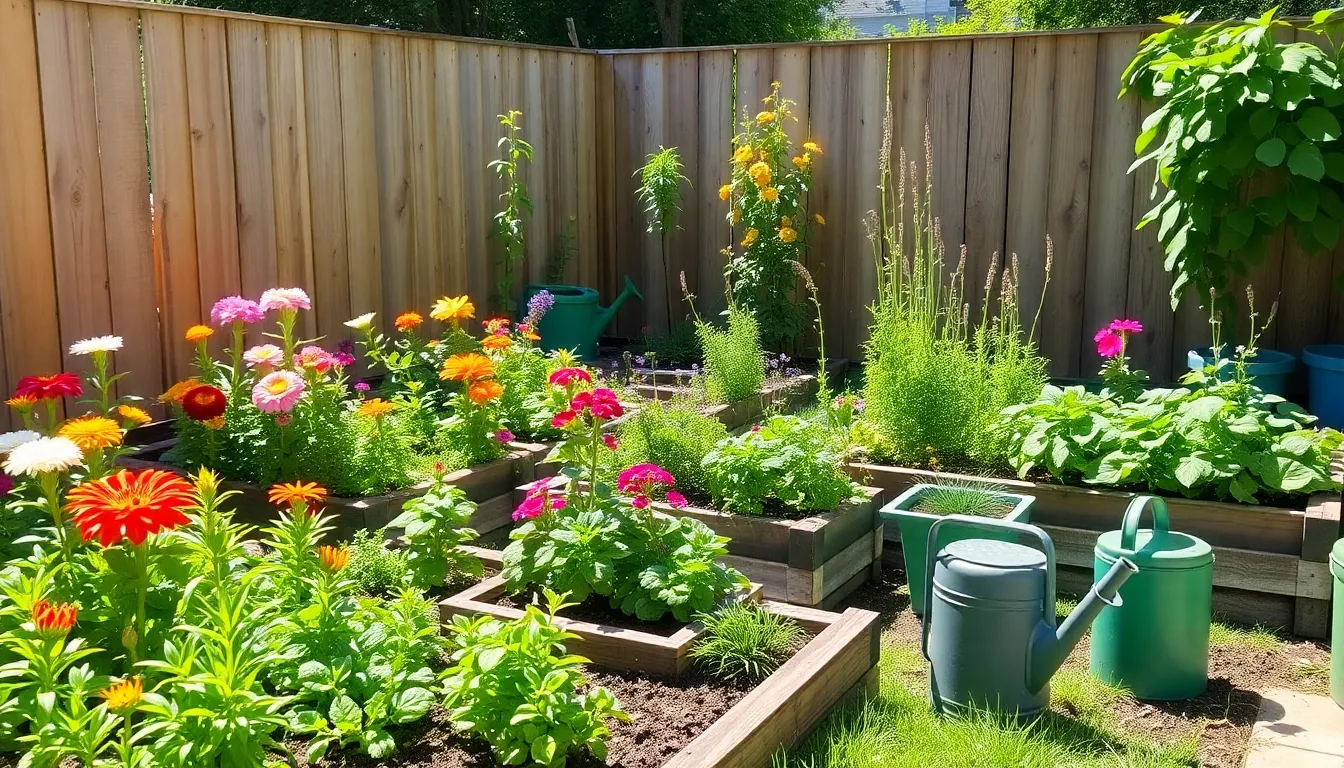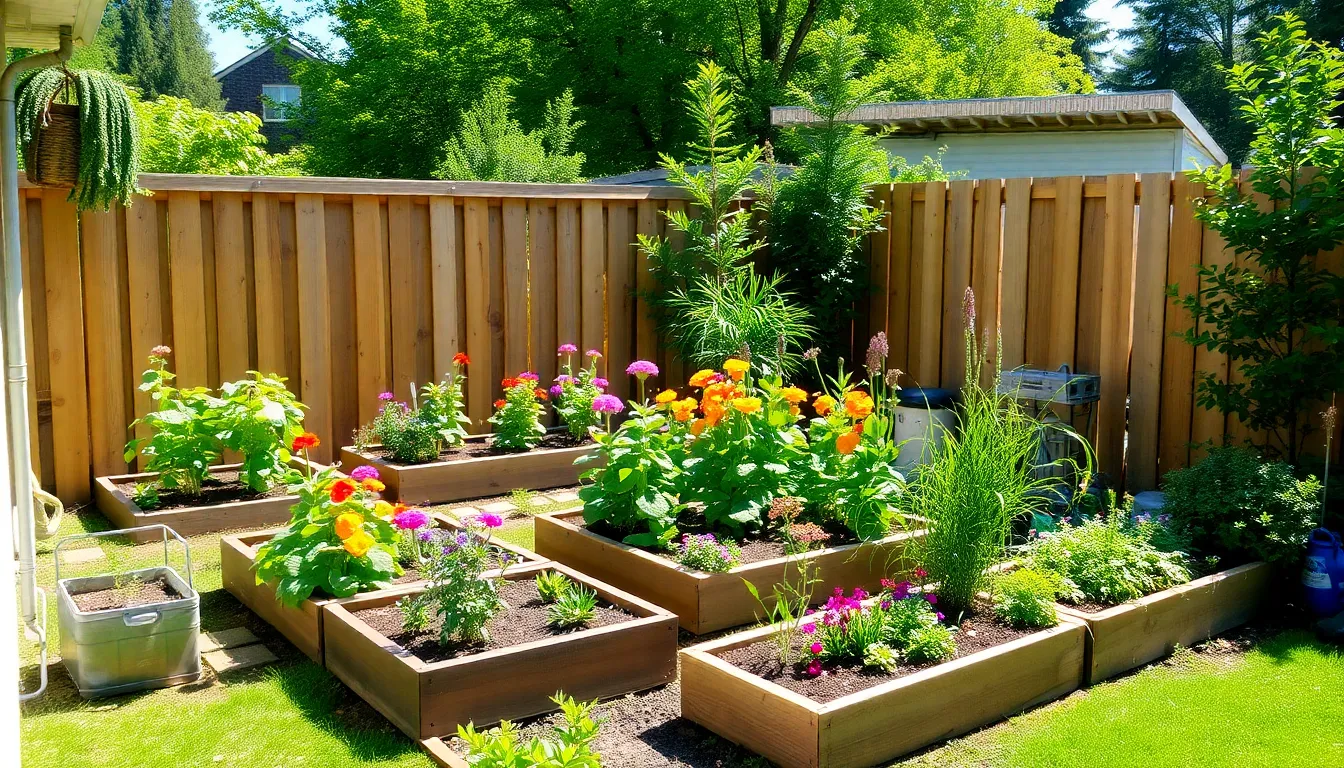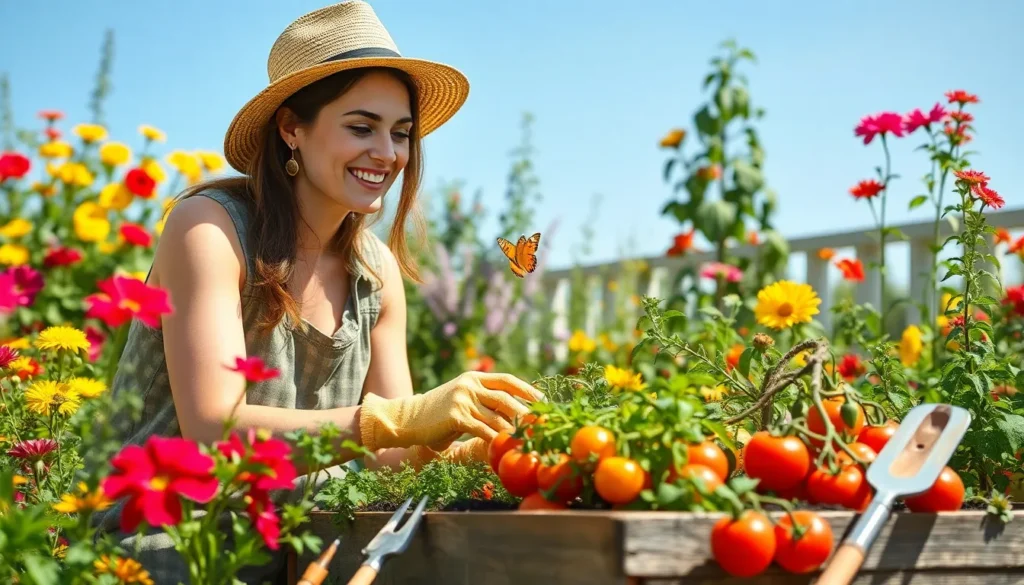Imagine stepping into your backyard and being greeted by a vibrant oasis of fresh herbs, colorful flowers, and perhaps even a few cheeky tomatoes trying to outshine each other. A small backyard garden isn’t just a patch of dirt; it’s a gateway to fresh flavors and a slice of tranquility, all while giving the neighborhood squirrels something to gossip about.
Small Backyard Garden
A small backyard garden offers numerous advantages, making it an ideal addition to any home. This space enhances enjoyment and promotes sustainability in everyday life.Space Optimization
Limited space doesn’t restrict gardening potential. Effective layout and smart planning allow for vertical gardening techniques, utilizing walls and fences for climbing plants. Raised beds can maximize soil efficiency while keeping maintenance easy. Container gardening also plays a crucial role, enabling the growth of herbs and vegetables in restricted areas. By incorporating pathways and strategic plant placement, gardeners can create accessible and visually appealing landscapes. These practices make the most of a small area, transforming it into a multifunctional oasis.Fresh Produce Availability
Gardening ensures ready access to fresh produce. Homegrown vegetables and herbs encourage healthier eating habits by providing nutrient-rich options. Flavor often exceeds that of store-bought counterparts, enhancing culinary experiences. Growing favorites like tomatoes and basil offers a sense of pride and accomplishment. Regular harvesting promotes seasonal awareness and culinary creativity, allowing individuals to experiment with new flavors and recipes. Enjoying fresh food reduces reliance on grocery stores, leading to cost savings and a more sustainable lifestyle.Planning Your Small Backyard Garden

Selecting The Right Location
Choosing the right spot for a garden impacts its success. Areas with at least six hours of sunlight daily support vegetable growth and flowering plants. Drainage plays a crucial role; elevated spots prevent waterlogging. Fencing can help protect against pests and harsh winds. Proximity to a water source simplifies irrigation needs. Observing the sun’s path enables better light exposure for plants.Choosing Suitable Plants
Selecting suitable plants ensures a thriving garden. Consider climate zones for appropriate plant choices. Opting for native species enhances sustainability and requires less maintenance. Fast-growing plants like lettuce and radishes yield results quickly. Combining perennial herbs with annuals offers varied harvests throughout the seasons. Compact varieties of vegetables work well in limited spaces. Understanding growth habits helps in planning layouts for optimal growth.Designing Your Small Backyard Garden
Designing a small backyard garden involves thoughtful planning to maximize both space and beauty. Attention to layout and vertical space can significantly enhance the garden’s functionality and aesthetic appeal.Layout Ideas
Maximize the available area with smart layout designs. Utilize the corners of the yard for raised beds, allowing easy access for maintenance. Create curved paths to soften the visual lines and maintain a sense of openness. Group plants by height to ensure taller varieties don’t overshadow shorter ones. Arranging plants in clusters promotes a lively and vibrant atmosphere. Incorporate pathways to enable movement and exploration throughout the garden. Designing distinct zones for herbs, flowers, and vegetables adds variety to the space.

